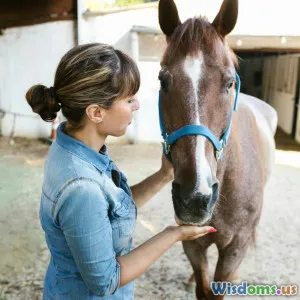
Tips for Reading Pet Emotions
5 min read Learn how to interpret your pet's emotions for a happier, healthier relationship. (0 Reviews)
Tips for Reading Pet Emotions
Understanding and interpreting the emotions of our pets is crucial for ensuring their happiness and well-being. Pets, like humans, experience a range of emotions which can be expressed through body language, vocalizations, and behaviors. In this article, we will explore practical tips and insights to help pet owners read their furry companions more effectively.
1. Body Language Basics
Pets communicate a lot through their body language. Here are some key indicators to watch for:
-
Tail Position: A wagging tail can often signify happiness or excitement in dogs, while a low or tucked tail may indicate fear or submission. For cats, a raised tail is typically a sign of confidence and friendliness, while a puffed-up tail indicates fear or aggression.
-
Ear Position: Dogs with perked ears are usually alert and curious, whereas ears pinned back can indicate fear or submission. Cats’ ears that are angled forward suggest interest, while ears flattened against the head can signal annoyance or aggression.
-
Posture: A relaxed posture generally indicates contentment, while a stiff body may suggest tension or aggression. Dogs that crouch may be fearful, while cats that stretch out are usually comfortable and relaxed.
2. Vocalizations Matter
Understanding your pet’s vocalizations can provide insights into their emotional state:
-
Dogs: Barking can mean many things depending on the context. A high-pitched bark might indicate excitement, while a deep bark could be a warning. Whining often expresses anxiety or a need for attention.
-
Cats: Cats meow primarily to communicate with humans. A short, soft meow can signify a greeting, whereas a loud yowl may indicate distress or a demand for something. Purring generally indicates contentment, but it can also occur when a cat is in pain, so context is key.
3. Observing Behavior Changes
Changes in behavior can be a significant indicator of your pet’s emotional state. If your usually playful dog becomes withdrawn or your cat stops grooming itself, these could be signs of stress, illness, or depression. Keeping a close eye on behavioral patterns helps you catch potential issues early.
4. Social Interactions
How your pet interacts with other animals and humans can reveal their emotional health:
-
Dogs: If your dog approaches other dogs confidently and engages in play, they are likely feeling secure. Conversely, if they bark excessively or try to hide, they may be feeling anxious or threatened.
-
Cats: Cats that enjoy social interactions with you or other pets are generally happy. However, if a cat hides a lot or swats at other pets, it might be feeling stressed or overwhelmed.
5. Environmental Factors
Your pet’s environment can significantly affect their emotions. Factors like noise levels, changes in routine, or the introduction of new pets can lead to anxiety. Creating a stable, comfortable environment can help pets feel more secure and emotionally balanced.
6. Building Emotional Intelligence
Understanding your pet’s emotions is an ongoing process. Spend quality time with your pet to develop a deeper connection and learn their unique signals. Positive reinforcement training can also help them feel more secure while enhancing your bond.
Conclusion
Being attuned to your pet’s emotions not only helps you respond appropriately to their needs but also strengthens your relationship with them. By observing body language, vocalizations, behaviors, and environmental factors, you can better understand what your pet is feeling. Remember, every pet is unique, so take the time to learn how your furry friend expresses themselves. With patience and love, you can create a harmonious, joyful life together.
Rate the Post
User Reviews
Popular Posts


















